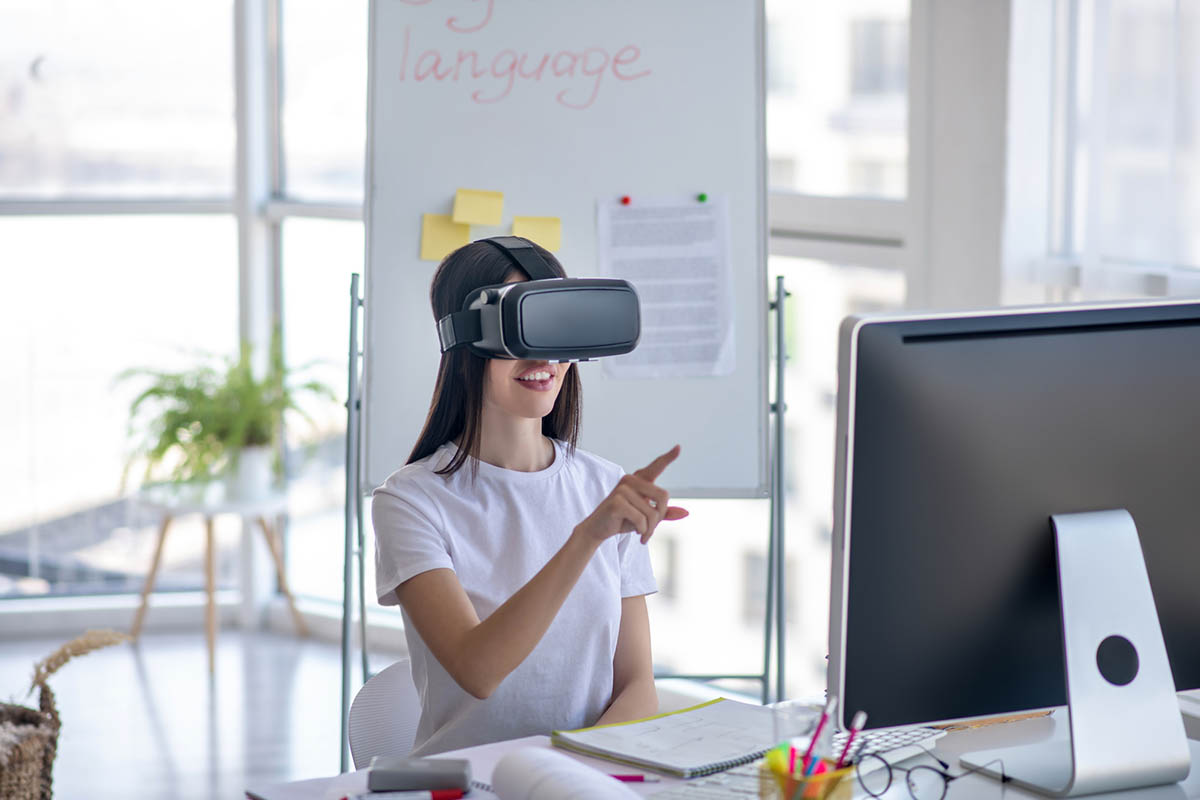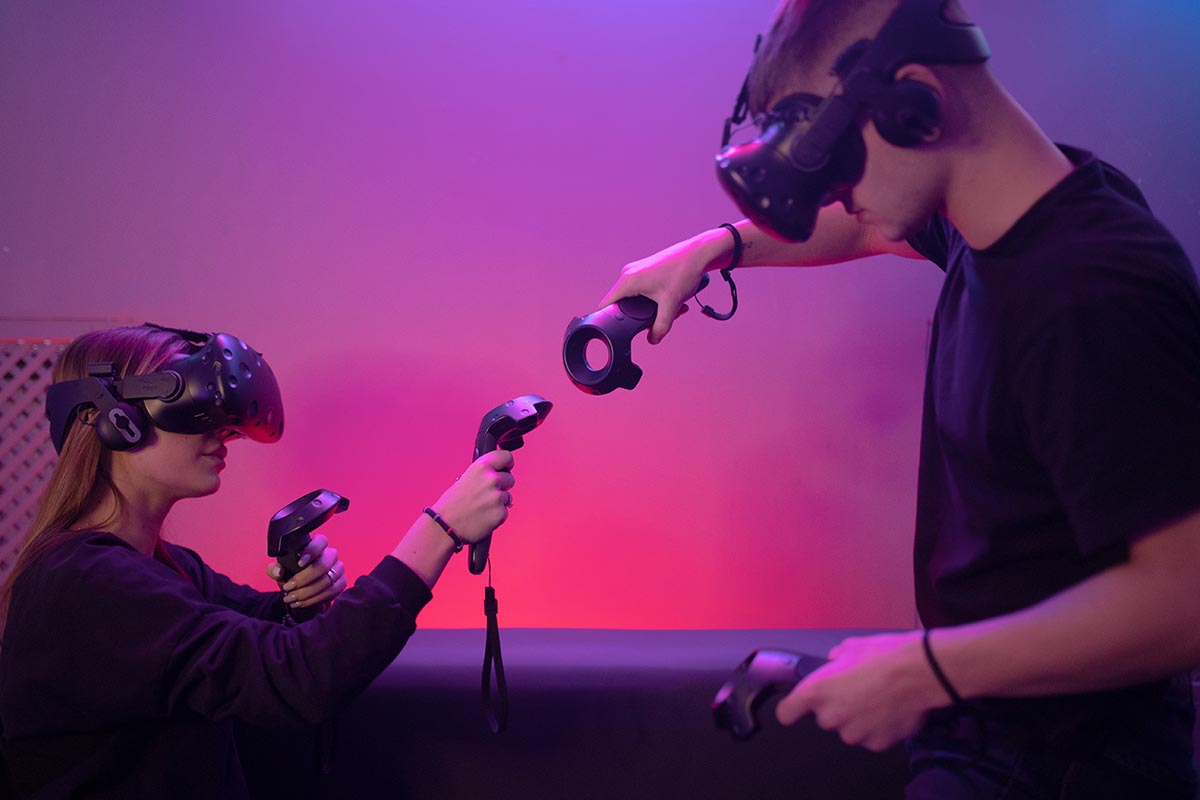According to a recent report by Goldman Sachs, the global virtual and augmented reality market in education is projected to reach $1.6 billion by 2025. This indicates the growing importance of virtual reality technology in the education sector.
With virtual reality offering a more immersive and engaging experience for learners, it is no surprise that more and more educators are turning to this technology to enhance their teaching methods and improve student outcomes.
Understanding Virtual Reality: Definition of Virtual Reality
Virtual reality (VR) is an immersive technology that uses computer-generated simulations to create a three-dimensional environment. The user can interact with the environment using specially designed equipment such as head-mounted displays (HMDs) and hand controllers. VR technology aims to replicate real-world experiences, making it an excellent tool for education.
Types of Virtual Reality
There are primarily two virtual reality types: immersive and non-immersive.
- Immersive VR provides a highly interactive experience that simulates an entirely new environment.
- Non-immersive VR involves using computer screens or projectors to create a semi-immersive experience.
Brief Overview of How Virtual Reality Works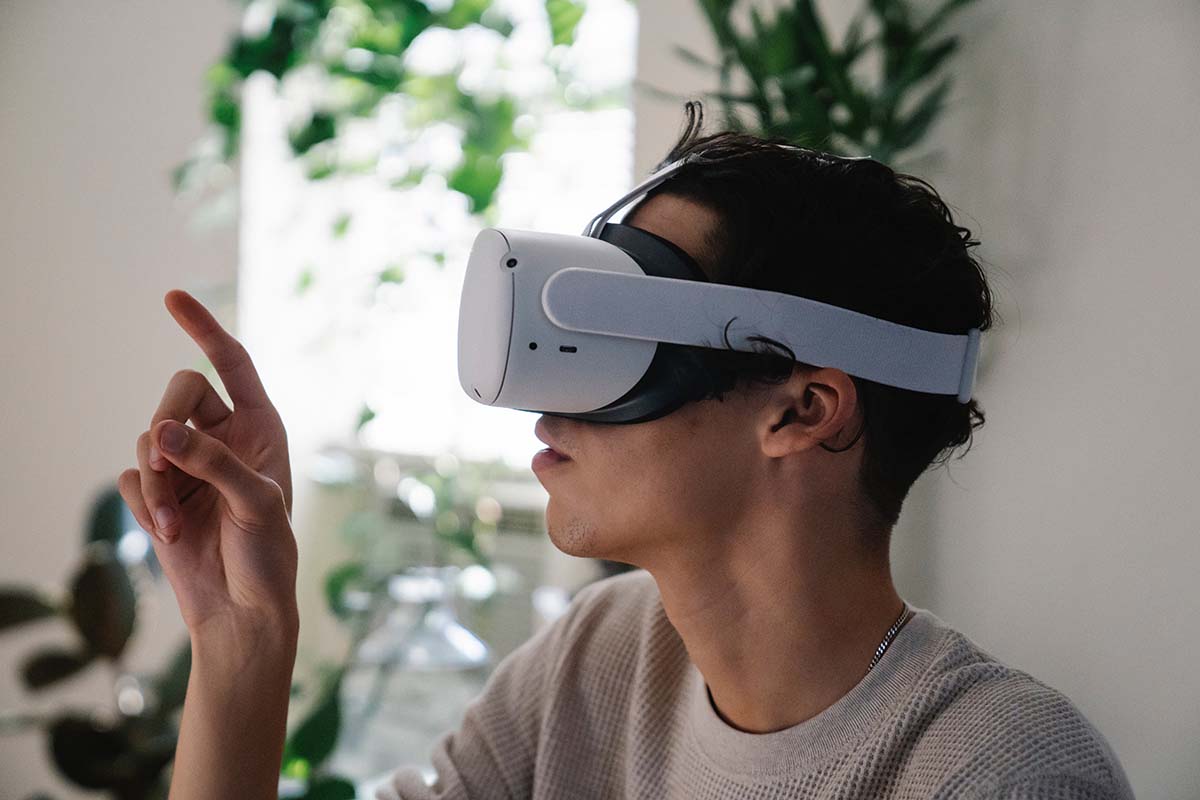
Virtual Reality (VR) technology creates a simulated environment that can be experienced through a headset or other specialized equipment. Here’s a simplified overview of how VR works:
- The VR headset or equipment the user wears typically consists of a display screen, motion sensors, and headphones.
- The user’s movements and actions are tracked by motion sensors, which detect their head and body movements and adjust the VR environment accordingly.
- The VR environment is created using computer-generated images and graphics displayed on the headset’s screen.
- The VR environment is designed to be fully immersive, which means that it covers the user’s entire field of vision and can be experienced in 360 degrees.
- To create a more realistic experience, some VR systems also incorporate other sensory inputs, such as haptic feedback or scent.
- The user can interact with the VR environment using specialized controllers or gestures, which are also tracked by motion sensors.
Overall, VR technology creates a fully immersive and interactive environment that simulates a real-world experience. As technology advances, VR will likely become even more realistic and accessible to a wider audience.
Virtual Reality in Education: Advantages of Virtual Reality in Learning
Virtual Reality (VR) has proven to be an effective educational tool, as it offers immersive and interactive experiences that can enhance learning outcomes. Here are some of the key benefits of using VR in education:
- Enhanced engagement: VR offers a level of engagement that is difficult to achieve through traditional teaching methods. By immersing students in a simulated environment, VR can spark their curiosity and motivate them to explore and learn.
- Improved retention: Studies have shown that VR can improve retention rates by up to 75%. This is because VR offers a more memorable and impactful learning experience compared to reading or watching videos.
- Safe experimentation: VR can provide a safe environment for students to experiment and learn without the risk of physical harm. For example, VR simulations can be used to teach students how to operate machinery or handle hazardous materials.
- Accessibility: VR can be used to create inclusive learning environments by allowing students with different learning styles and abilities to experience education in a way that suits them.
- Cost-effective: While the initial investment in VR equipment and software may be high, it can be cost-effective in the long run. For example, VR can eliminate the need for expensive field trips or equipment.
Overall, VR can potentially transform how we teach and learn. As technology advances, VR will likely become an increasingly important educational tool.
Virtual Reality Colleges: A New Era of Higher Education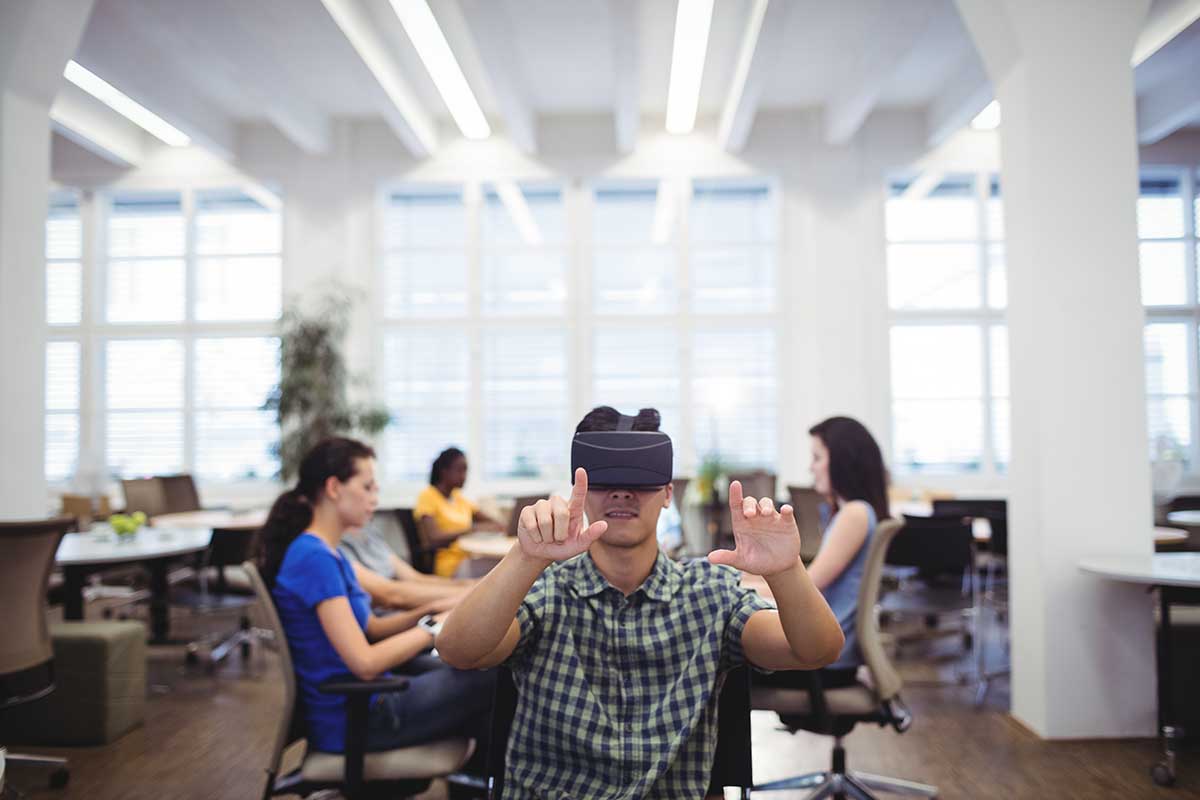
Virtual reality colleges represent a new era of higher education. These colleges offer students access to immersive learning environments that enable them to experience learning in a whole new way.
Virtual reality colleges allow students to learn in a risk-free environment, engage with interactive simulations, and collaborate with peers worldwide.
Virtual reality colleges also offer courses in medicine, engineering, and architecture that require hands-on training.
Virtual Reality in Special Education and Therapy
Virtual reality has been used in special education and therapy to provide individuals with disabilities with an immersive and interactive learning experience. Virtual reality simulations can help individuals with disabilities overcome physical and mental challenges and develop necessary skills.
Virtual reality has also been used in therapy to treat phobias, anxiety disorders, and post-traumatic stress disorder (PTSD).
Virtual Reality vs. Augmented Reality: Definition of Augmented Reality
Augmented reality (AR) is a technology that overlays digital content in the real world. Unlike virtual reality, which creates an entirely immersive environment, augmented reality adds digital elements to the real-world environment.
Differences Between Virtual Reality and Augmented Reality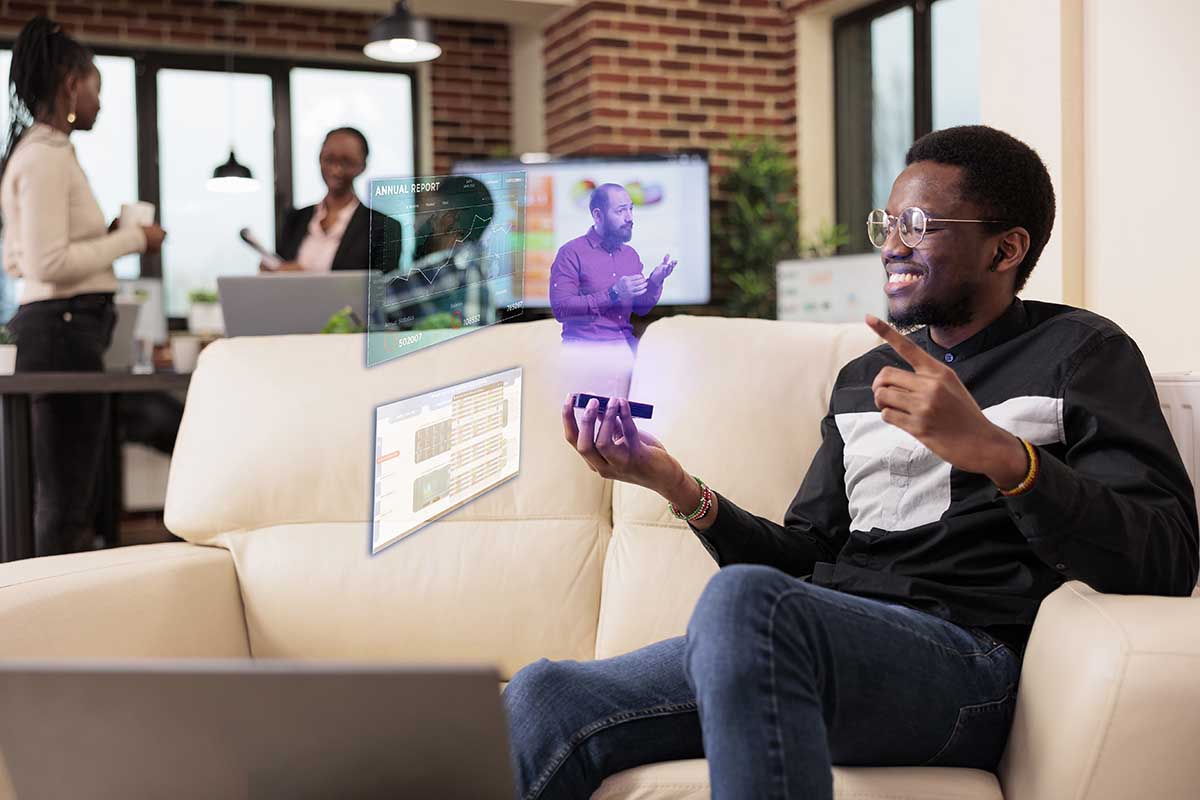
Virtual Reality (VR) and Augmented Reality (AR) are two distinct technologies that are often used interchangeably, but they are fundamentally different. Here are some of the key differences between VR and AR:
- Immersion level: VR is a fully immersive experience that places the user in a completely simulated environment, while AR overlays virtual objects in the real world. In other words, VR completely replaces the user’s real-world surroundings, while AR enhances them.
- Equipment: VR requires the use of a headset or other specialized equipment to immerse the user in a simulated environment fully. AR, on the other hand, can be experienced through a smartphone or tablet with a camera.
- Purpose: VR is typically used for entertainment, gaming, or simulation, while AR is used more for practical applications, such as training, education, or marketing.
- Interaction: In VR, the user interacts with the virtual environment using specialized controllers or gestures, while in AR, the user interacts with both the real world and virtual objects using touch or gestures.
- Spatial awareness: VR is designed to completely remove the user from the real world, which means that the user has no spatial awareness of their surroundings. AR, on the other hand, enhances the user’s spatial awareness by overlaying virtual objects onto their real-world surroundings. This makes it useful for procedural guidance and training with a hands-on approach.
Overall, VR and AR are two different technologies with distinct advantages and disadvantages. While VR offers a fully immersive experience, AR offers more practical applications in education and marketing. As technology advances, VR and AR will likely become increasingly important in various industries.
Conclusion
Virtual reality has the potential to revolutionize the way we learn and teach. It offers a more immersive and engaging experience for students, allowing them to interact fully with digital content and learn more effectively and memorably.
Virtual reality colleges are already changing the face of higher education, and VR technology is being increasingly adopted in career training and special education.
As virtual reality technology continues to evolve, educators and learners need to stay informed and explore its potential.
Virtual reality offers a new and exciting way of learning and teaching, and we should embrace this technology to unlock its full potential in education and beyond.
